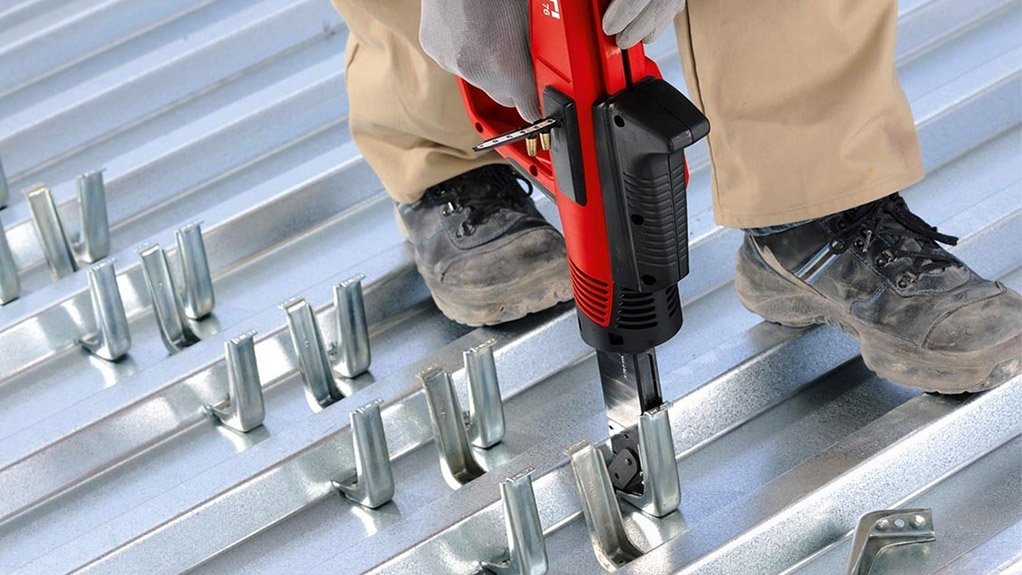Construction industry supplier Hilti South Africa’s Hilti X-HVB system – an alternative composite deck shear connector – makes composite construction more convenient and cost effective, says Hilti South Africa engineering head Christiaan Davel.
Composite construction consists of a concrete slab poured over a permanent steel shutter, which is connected to the steel or iron beam below. It is a favoured method in the construction of multiple-storey buildings. Traditionally, the permanent shutters are connected to the beams below using electrical stud welding.
However, this method poses many challenges to construction, such as sourcing highly skilled and experienced labour, significant initial capital investments, and health risks associated with welding, for instance, when welding on to galvanised steel beams, claims Davel.
The Hilti X-HVB system overcomes many of the challenges of traditional welding as it mechanically fastens shear connectors to the structural primary or secondary beams below. The system has a piston that is triggered by a 6.18/8 mm blank cartridge that is used as the propellant. The force transferred from the cartridge into the piston drives the nail through the permanent shutter and into the beam below.
There are a variety of cartridges with nails for different construction materials available, with shear connectors ranging in height from between 50 mm and 150 mm.
Further, the system does not require highly skilled labour – a drawback of traditional welding – as it is loaded with the cartridges that contain the nails, and fired into a specific spot. This does not require significant skills.
The X-HVB system also does not require a three-phase generator or extra lifting equipment as the system is lightweight and small enough to fit into a medium sized case. “Contractors will neither have to hire extra lifting equipment to raise the welding equipment with every storey nor will they need to make the initial significant investment in welding equipment,” says Davel.
He adds that the system presents fewer hazards on site, as there are not multiple cables that traditional welding methods require, making the X-HVB system less of a tripping hazard. “Also, since no welding is done on site, contractors do not need a hot work permit, which contributes to additional safety benefits. “This results in contractors having to hire fewer people, reducing costs.”
The X-HVB system is suitable for use in all weather, and welding quality does not depend on the surface conditions of the beams, such as the rust that may have formed on the beams.
Davel says the system does not require extra finishing for the beams once the shear connectors have been attached, as it does not damage paint or galvanising on beams.
Edited by: Zandile Mavuso
Creamer Media Senior Deputy Editor: Features
EMAIL THIS ARTICLE SAVE THIS ARTICLE
ARTICLE ENQUIRY
To subscribe email subscriptions@creamermedia.co.za or click here
To advertise email advertising@creamermedia.co.za or click here













